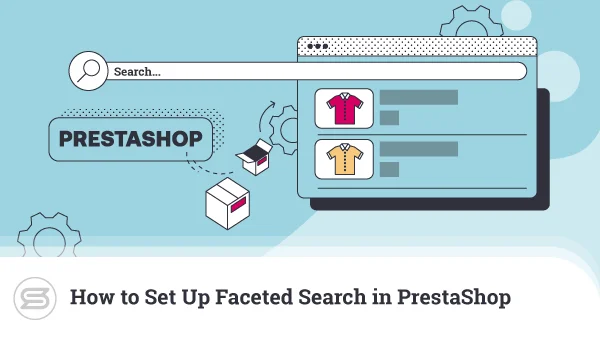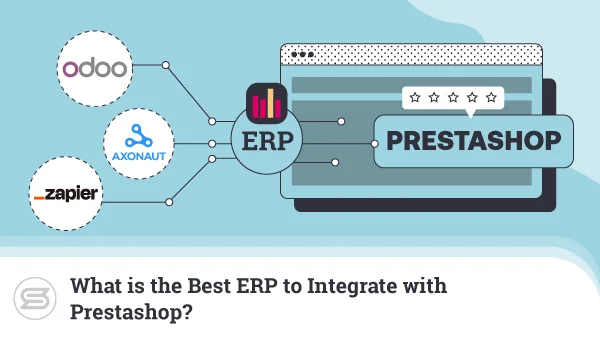WooCommerce and Magento are two of the most popular ecommerce platforms. They both offer many exciting features and optimized performance for any online shop. Comparing the two also makes absolute sense. The platform you choose can make a big difference to your online business, so let’s see how to choose the best one.
This is the WooCommerce vs Magento comparison.
What is WooCommerce?
WooCommerce is an ecommerce plugin for WordPress. In fact, with over 80 million downloads and nearly 29% market share, Woo is by far the top platform for building online shops.
The design of this application centers around simplicity and ease of use. By adding it to their WordPress installations, users can quickly gain ecommerce functionality and set up a trendy-looking storefront in a matter of minutes. The plugin is suitable for small to medium online shops, although some bigger brands find great use of it as well.
WooThemes first developed and launched the extension in 2011. Automattic, the owners of WordPress.com, later acquired the company and plugin, pushing it to the top of the ecommerce ranks.
What is Magento?
Magento is an easy-to-use open-source ecommerce platform that includes all the necessary tools to handle small and large online stores alike. These include a shopping cart system, product management tools, billing solutions, and much more. In addition, Magento has an extensions marketplace, available to users that need additional functionalities.
The brand has a long history in the industry, dating back to 2008. Magento is a standalone application – it’s most significant distinction from WooCommerce, which needs WordPress to run.
Today, Magento is offered in several different versions. There are Free, Commercial, and even Cloud-based enterprise packages for the platform.
Computer software giant Adobe acquired Magento in 2018 for a reported fee of close to $1.7 billion.
WooCommerce Pros and Cons
Just like any other application, there are advantages and drawbacks to using WooCommerce.
Its symbiotic relationship with WordPress means the two platforms share a lot of features and options. WooCommerce is highly flexible. Its core architecture makes it ideal for all types of online stores regardless of the chosen niche. Whether you’re selling physical or digital products – WooCommerce should be of prime consideration.
This flexibility extends to site design as well. Choosing from a wide selection of stylish themes, you can easily change how your online store looks and feels. Each template also comes with individual customization options, allowing you to create a unique outlook for your website.
The scalable plugin ecosystem gives WooCommerce some key advantages. The platform can be expanded indefinitely with the right extensions. And you can be sure there are plenty of them. Due to its high popularity, thousands of developers and programmers invest time and effort to create new plugins and themes for WooCommerce.
Let’s not forget one of the best selling points – WooCommerce is completely free to use. Anyone can download and deploy the ecommerce app without the need for initial financial investments. Thanks to open-source licensing, you can even modify the code to suit your needs.
There are a few disadvantages to note when it comes to WooCommerce as well.
Loose development regulations when it comes to WooCommerce plugins and themes can result in heightened security risks and performance impacts. Poorly developed extensions can cause significant problems. The time and effort spent addressing these concerns could be more than the extra feature is worth.
WooCommerce may be free, but some extensions and themes come at a premium price. That can range from a few bucks to hundreds of dollars just for licensing. If you aren’t paying attention, operational costs can scale up quickly.
If you’re not a WP fan, chances are you wouldn’t be a WooCommerce supporter as well. It is not a standalone platform, so installing WordPress beforehand is a must-have requirement for this ecommerce plugin.
Magento Pros and Cons
Although Magento is less popular than WooCommerce, it can run independently in any environment that supports PHP.
With the introduction of Magento 2, the platform became much more mobile-friendly. Google is actively looking to optimize the performance of its mobile users, so responsive websites hold more SEO value than ever.
Out of the box, Magento has surprisingly advanced features. It can handle multi-language stores, a wide range of product types, complex pricing systems, and even distributed warehousing.
Magento also makes use of an extension system. Users can quickly and easily expand the functionalities of their stores with a quick visit to the Magento App Store and a few mouse clicks. This allows store owners to craft online stores with unique capabilities.
Whether you intend to run a simple online store or a huge enterprise project – Magento has all the answers. The application is robust enough to handle virtually any store size – as long as it gets the system resources allowing it to do so.
These benefits don’t come without drawbacks, though.
There is a free version, but this one is rather limited. To get the best out of your Magento shop, you’d either need to add some premium extensions or opt-in for a more powerful plan. At the end of the day, what starts as free can turn out to be very costly.
Compared to WooCommerce, Magento is unnecessarily complicated to configure. Its layered architecture can lead to long development processes if you require any custom builds. Mastering the ecommerce application can sometimes have a very steep learning curve.
WooCommerce vs Magento (Head-to-head Comparison)
So, WooCommerce vs Magento – which platform should you choose?
Both serve the same purpose, but their underlying design might be the key to setting on the right one for your eCommerce business.
Some common areas of comparison we can use to reflect this include:
- Features
It can be challenging to choose the right balance between core functionalities and light performance. Thankfully, this is an area in which both Magneto and WooCommerce have done well – with a few essential differences.
Off the bat, WooCommerce offers a ton of basic features that help you run an online business. The keyword here is “basic” – if you want anything a little more advanced, you will need to rely on extra plugins.
Magento, on the other hand, is complex enough to handle almost anything by default. You can even build highly feature-rich online stores by relying on Magento’s core features.
Magento might be more feature-rich, but users who aren’t interested in complexity should look towards WooCommerce instead. This is especially true for those already accustomed to the WordPress system.
- Ease of Use
There is no real competition between WooCommerce and Magento where ease of use is concerned. One key reason for WordPress’s dominance is its user-friendliness, which extends to its plugin system.
From installation to configuration – WooCommerce is suitable for beginners and users with less experience. While you may need some acclimatization for advanced features, everything is fairly straightforward.
In comparison, Magento is immensely versatile, but you can always benefit from some coding knowledge to get the best results.
- Security
With regular updates, both WooCommerce and Magento are considered relatively secure. Adding to that, the two platforms allow for upgrades in security through the use of add-ons.
Industry-leading security companies have helped in developing specialized security extensions for these platforms. Leading cybersecurity firm Sucuri, for example, has solutions that easily integrate with both WooCommerce and Magento ecommerce stores.
- Extensions
Magento and WooCommerce both support a wide range of extensions.
In terms of installation, WooCommerce extensions are significantly easier to deploy. These simply slot in the same way as other WordPress plugins. Most are accessed and installed through the WP dashboard in a couple of clicks.
WooCommerce also has a broader range of plugins due to its higher popularity and active community. No matter what you need – it is very likely that something fitting already exists.
Hundreds of Magento extensions are available in online marketplaces as well. Many of them are premium and serve big enterprise ecommerce projects. Such add-ons can easily cost hundreds, even thousands of dollars for licensing.
Some of the things you can implement with extensions (on both platforms) include:
- Multiple payment gateways
- Multicurrency support
- Billing automation
- Inventory management
- Shipments and logistics
- Support
WooCommerce does not offer official support channels. There are, however, plenty of third-party developers that you can hire to provide you with reliable support when needed.
In comparison, getting dedicated assistance for Magento depends on which version you’re utilizing. The Free plan, much like WooCommerce, doesn’t come with official support. Commercial versions come with multiple support channels and various options available on signup.
Whichever ecommerce solution you choose – your best means of support is your host, so make sure to partner with a reliable hosting provider experienced in the software.
- Pricing
WooCommerce is free to use, while Magento offers both free and commercial licenses. There is also a considerable variation in price depending on exactly how you intend to deploy Magento – on or off-premise. Magento 2 Enterprise Edition can easily cost well over $20,000 per month to run.
It is important to note that this pricing doesn’t consider other factors that come into play. For example:
- Web hosting
- Support
- Development fees for customizations
- Commercial themes and extensions
- Payment gateway fees
The free version of both platforms should be sufficient for an eCommerce site.
WooCommerce vs Magento – Which One to Choose?
Despite excelling in different areas, both WooCommerce and Magento are extremely reliable platforms. When deciding which to choose, you will need to have your specific requirements in mind.
WooCommerce is better suited for those with fewer technical skills who need to run small to medium online shops. Its high ease of use results in a much lower learning curve and lessens the need for support.
Magento’s extreme scalability, coupled with its more streamlined architecture, makes it a better platform for complex, high-traffic ecommerce websites. With a dedicated support team behind your back, Magento can handle practically anything.
Conclusion
As with most websites in general, users need to know what type of store they aim to build. Will you keep it simple, or do you intend to establish an ecommerce presence that will grow into an industry mogul?
WooCommerce vs Magento is one comparison that boils down to the scope of your project. To get the best feel of both platforms, you can opt-in for a free trial with your potential web host.
Still, keep in mind that running an online shop often requires more resources and security than a standard website, so you should go for a high-performing VPS solution to avoid future headaches.
Frequently Asked Questions
Q: Is WooCommerce free to use?
A: Yes, WooCommerce is absolutely free to use. Extra costs may arise only from associated services, including premium extensions, support, themes, and web hosting.
Q: What are the requirements to run WooCommerce?
A: WooCommerce requires an environment that includes PHP and MySQL. It also needs a compatible version of WordPress, which depends on the WooCommerce version you’re running. Check with your host for the supported PHP/MySQL versions and if they will be able to assist with WP configuration.
Q: Is Magento still relevant?
A: Yes, Magento 1 stores still exist, although the app version entered its end-of-life in June 2020. The problem is webmasters should not expect any new releases and security patches in the future.
In comparison, Magento 2 offered a mobile-first design concept and tons of new functionalities, which inspired many users to switch to the new version.
Q: Why is Magento so expensive?
A: One of the main reasons why Magento Enterprise is so expensive is due to the support levels offered. This support makes it more suitable for large-scale deployments as you get a dedicated administrator responsible for your account. You can always contact them and enjoy faster issue resolutions from the experts that helped develop the ecommerce app.
Q: Do I need web hosting for Magento?
A: Yes, you do. Most Magento installations will require web hosting. The exception is for on-premise enterprise deployments where you run the software on your own servers.
While Magento is widely available on shared hosting plans, ScalaHosting recommends at least a cloud VPS server for optimal performance.





